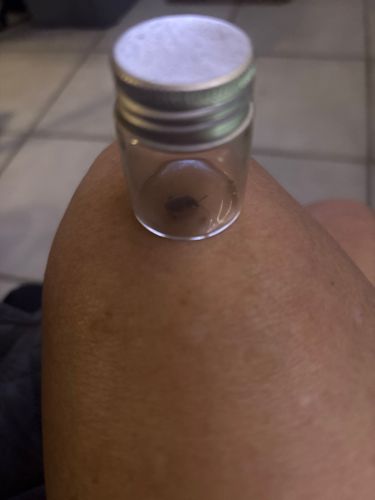Flea
Scientific Name: Ctenocephalides felis (cat flea) or Pulex irritans (human flea) are common species, but definitive identification requires microscopic examination.
Order & Family: Order: Siphonaptera, Family: Pulicidae (common fleas)
Size: Typically 1.5 to 3.2 mm (0.06 to 0.13 inches) long.

Natural Habitat
Fleas can be found globally in various environments as long as suitable hosts are present. They are commonly associated with mammals and birds, and are often found in carpets, pet bedding, cracks in floors, and other sheltered areas within homes or animal dwellings.
Diet & Feeding
Adult fleas feed exclusively on the blood of their hosts (hematophagous). Larval fleas feed on organic detritus, including dried blood-rich fecal matter from adult fleas (often called 'flea dirt').
Behavior Patterns
Fleas are ectoparasites, meaning they live on the outside of their hosts. They are known for their incredible jumping ability, which allows them to move between hosts. They have a complex life cycle involving eggs, larvae, pupae, and adult stages, with the larvae feeding on organic debris (flea dirt) and the adult fleas requiring a blood meal to reproduce.
Risks & Benefits
Risks: Fleas are a nuisance to pets and humans, causing itchy bites, skin irritation, and allergic dermatitis. They can transmit diseases such as murine typhus (via Rickettsia typhi), tungiasis, and the plague (Yersinia pestis), though plague transmission to humans in modern times is rare. They also act as intermediate hosts for tapeworms (e.g., Dipylidium caninum). Benefits: In most ecological contexts, fleas are considered pests and offer little direct benefit to humans or ecosystems, beyond being a food source for insectivores.
Identified on: 8/16/2025